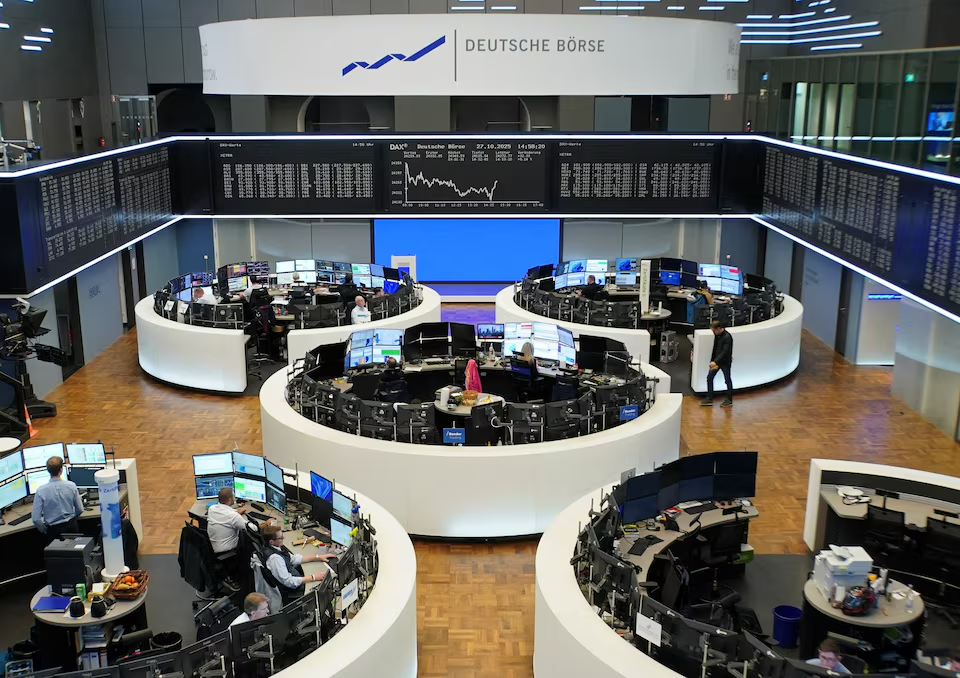
European financial markets remained largely steady on Thursday as the European Central Bank (ECB) kept interest rates unchanged at 2%, signaling continued confidence in the region’s low inflation and stable economic growth. Investors across stocks, bonds, and currencies maintained a cautious but calm stance amid the central bank’s neutral policy message.
ECB Holds Rates Unchanged
For the third consecutive meeting, the ECB decided to maintain its benchmark interest rates, keeping the deposit rate at 2%. The central bank also noted that its assessment of the inflation outlook remained broadly unchanged, indicating no immediate pressure to adjust monetary policy.
Analysts believe that this suggests the ECB is comfortable with the current economic trajectory, which has shown a rare period of steady growth and controlled inflation in the eurozone. Market expectations reflect this sentiment, with investors largely pricing in no further rate changes through the end of 2025. Looking ahead to 2026, the market anticipates only minor easing, with roughly an 8 basis point adjustment expected by year-end, implying a 32% chance of a quarter-point cut.
Market Reactions and Investor Sentiment
European equity markets showed modest declines. The STOXX 600 index, which tracks major European stocks, fell 0.6%, while a specialized index of eurozone banks dropped 0.8%. Meanwhile, the euro traded slightly lower against the U.S. dollar, down 0.2% at $1.1572, reflecting market caution following recent uncertainty over Federal Reserve policies in the U.S.
In the bond market, Germany’s 10-year government bond yield rose 3.5 basis points to 2.655%, while the policy-sensitive two-year yield increased by 3 basis points to 2.007%. Since bond prices move inversely to yields, these changes reflect slight downward pressure on prices as investors adjust to the ECB’s policy stance.
ECB Policy Outlook
ECB President Christine Lagarde emphasized that central bank policy is “in a good place,” able to tolerate minor and temporary deviations from the 2% inflation target. Recent economic data suggest that eurozone business activity has gained momentum in October, while inflation pressures remain subdued. Analysts note that this economic resilience is limiting calls from “doveish” policymakers for additional rate cuts in the near term.
Deutsche Bank’s chief European economist commented, “Where’s the smoking gun for a rate cut? Despite uncertainties like U.S. tariffs, the European economy continues to eke out growth. Economic resilience is keeping the ECB doves in check, and the policy pause remains on track.”
Key Takeaways for Investors
- Stable Eurozone Economy: Low inflation and steady growth support the ECB’s current policy.
- Limited Rate Changes Expected: Markets largely anticipate no rate changes through 2025, with modest easing potential in 2026.
- Mixed Market Performance: European stocks showed minor declines, while the euro and bond yields adjusted modestly.
- Monitoring ECB Signals: Investors are focused on Lagarde’s comments at post-meeting briefings for hints on future monetary policy.
As the eurozone continues to demonstrate economic resilience, investors are advised to monitor central bank communications and economic indicators closely, particularly as global uncertainties and U.S. policy decisions continue to influence market sentiment.


Leave a Reply